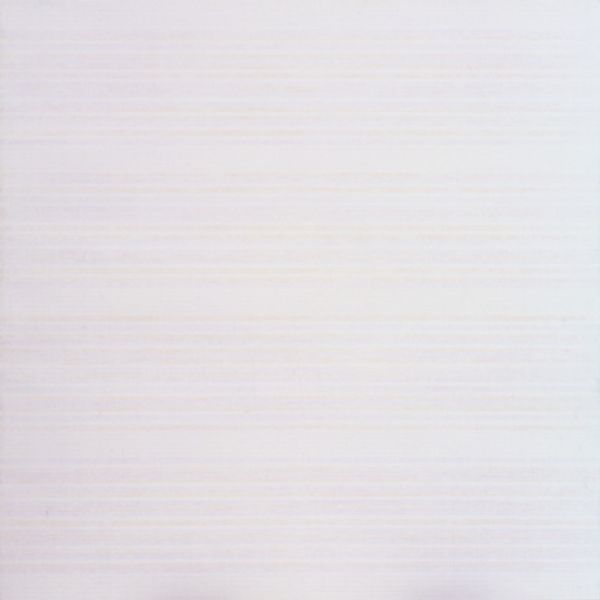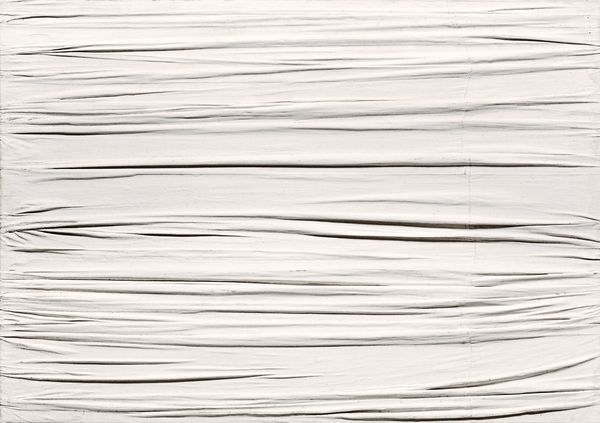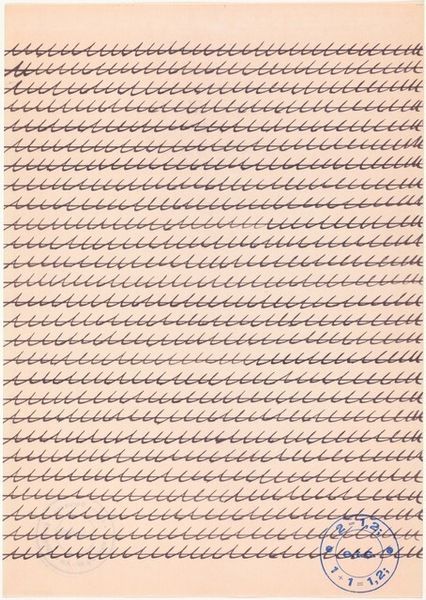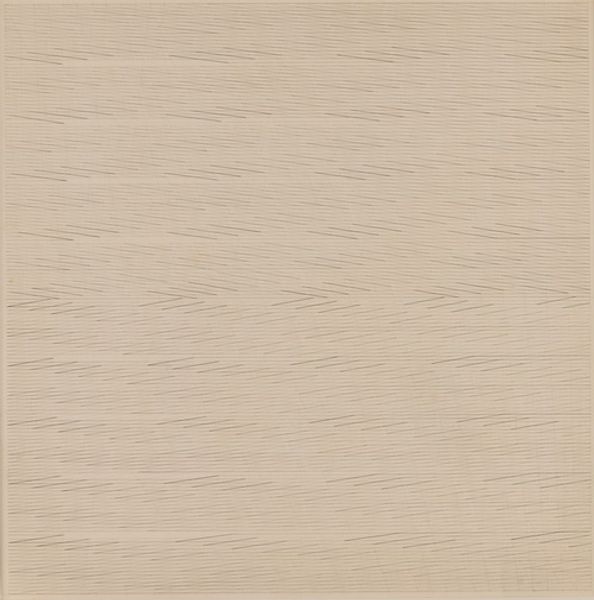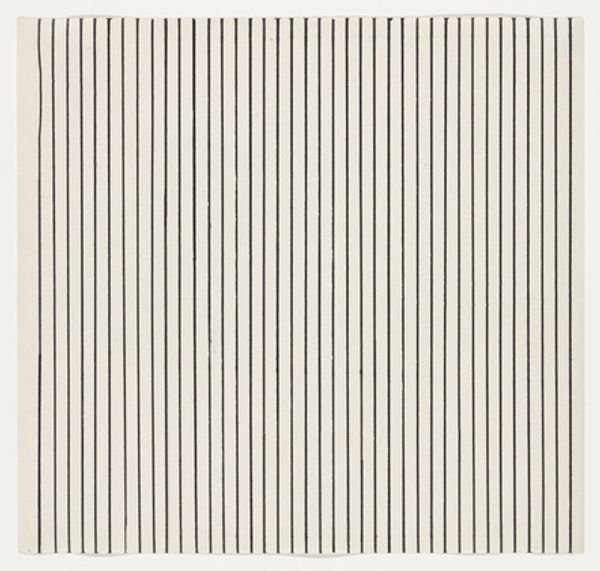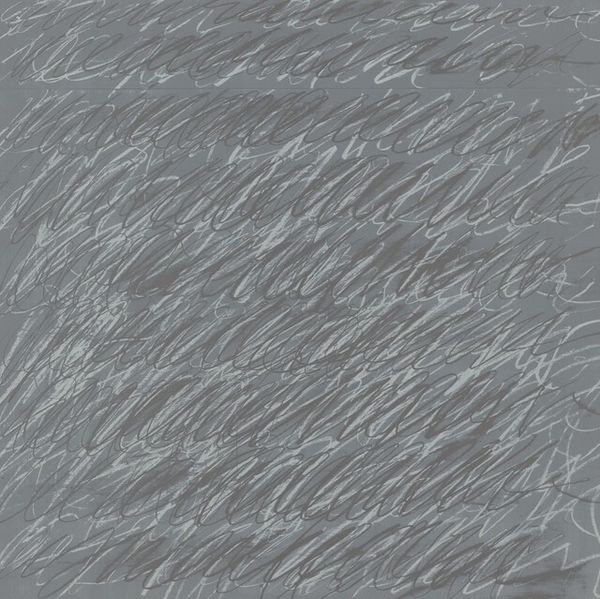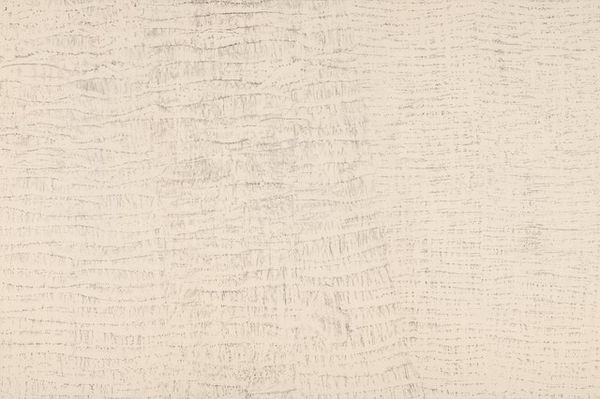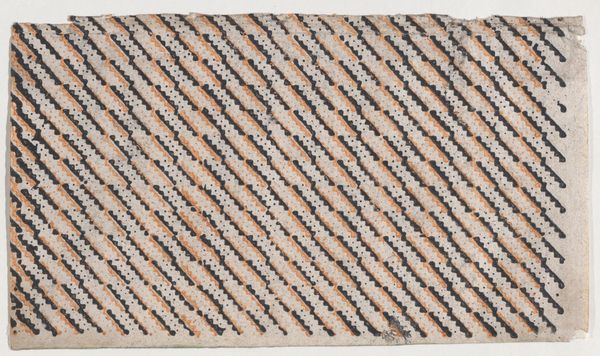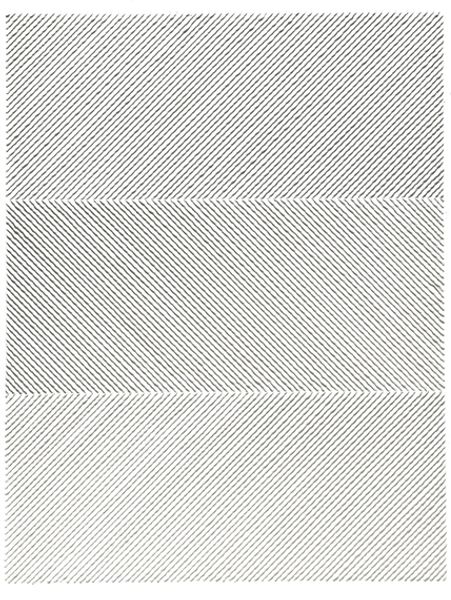
Alternate Not-Straight Lines (From the Right Side) and Broken Lines (From the Left Side) of Random Length 1972
0:00
0:00
drawing, graphite
#
drawing
#
conceptual-art
#
minimalism
#
geometric
#
abstraction
#
line
#
graphite
Copyright: Sol LeWitt,Fair Use
Editor: Here we have Sol LeWitt's "Alternate Not-Straight Lines (From the Right Side) and Broken Lines (From the Left Side) of Random Length," created in 1972 using graphite. At first glance, the piece feels incredibly systematic, yet strangely organic, a real play between order and chaos, wouldn't you agree? What's your take on it? Curator: It's a fascinating example of how art interacts with the political climate of its time. Think about the 1970s - a period marked by questioning authority and established systems. LeWitt, a central figure in conceptual art and minimalism, offered a radical departure from the emotionally expressive art of the preceding generation. The seemingly simple instructions, executed as lines, democratize artmaking. Anyone could, theoretically, reproduce this work. Does this accessibility change your perception? Editor: Absolutely! It makes me think about who gets to define "art," and challenges the traditional idea of the artist as some sort of solitary genius. Curator: Precisely. LeWitt was deliberately removing the artist's hand, diminishing the emphasis on personal expression, shifting it to the idea, the concept. It mirrors broader cultural shifts of questioning hierarchies and authorship prevalent in that period. How might viewers have reacted to something like this versus, say, an abstract expressionist painting, known for its overt emotion and mark-making? Editor: I imagine it might have been polarizing, almost a statement against the established art world, sparking conversations around accessibility and artistic intention. I wonder if some would see it as revolutionary while others might dismiss it as too simplistic? Curator: Exactly. That tension is precisely what makes it so powerful and enduring. It asks us to reconsider our expectations about what constitutes art and who has the authority to create it. Editor: This conversation's been really eye-opening. It's so much more than just lines on paper, isn’t it? Curator: It certainly is! It’s a reflection of a particular cultural moment, challenging the status quo and inviting us to think critically about the world around us.
Comments
No comments
Be the first to comment and join the conversation on the ultimate creative platform.




